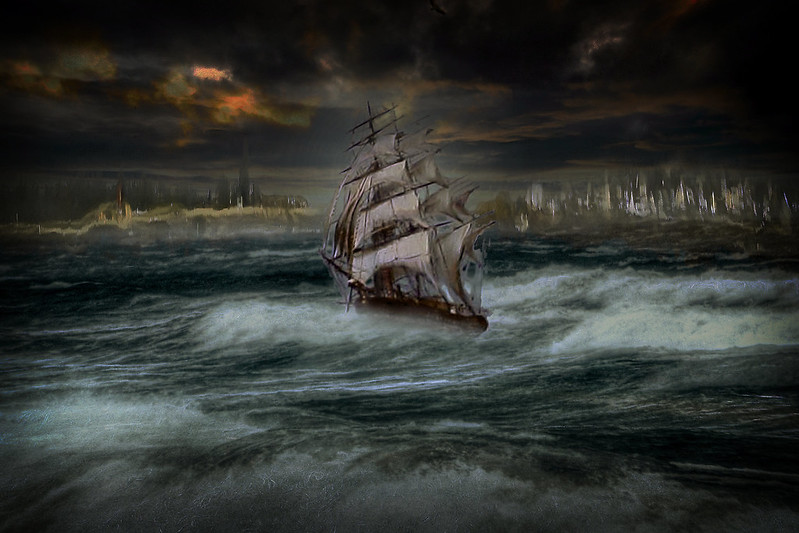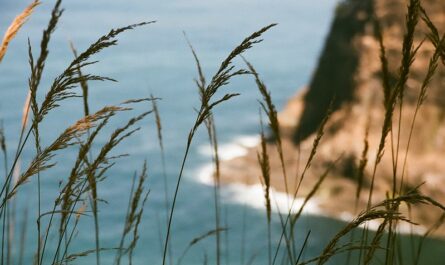Captain James Cook is often heralded as one of the greatest explorers in human history. His voyages in the 18th century not only mapped vast uncharted regions of the Pacific but also reshaped the world’s understanding of the seas, cultures, and geography. As one of the most influential figures in maritime exploration, Cook’s meticulous documentation, navigation techniques, and interactions with indigenous peoples left a lasting legacy that has shaped modern cartography and global history.
This article delves into the extensive achievements of Captain Cook’s three major voyages, the groundbreaking mapping of the Pacific, his encounters with various civilizations, and the implications of his discoveries that extended far beyond geography.
1. The Early Life of Captain James Cook: Foundations of a Legendary Explorer
James Cook was born on October 27, 1728, in Marton, England, into a working-class family. The son of a Scottish farm laborer, Cook’s early life was shaped by the rugged and practical demands of rural life. His humble beginnings provided little indication of the great exploits that would follow. At the age of 18, Cook moved to the coastal town of Whitby, where he became an apprentice to a shipowner. This marked the start of his seafaring career.
Cook’s natural aptitude for mathematics, navigation, and observation set him apart from his peers. His passion for the sea grew, and by the mid-1750s, he had joined the Royal Navy. Over time, Cook developed a reputation for his discipline, leadership skills, and navigation prowess. His work in the Seven Years’ War, notably in mapping the coasts of Newfoundland and Canada, caught the attention of British naval authorities, and in 1768, he was selected to lead the first of three Pacific expeditions that would alter the world map.
2. The First Voyage: Observation of Venus and the Discovery of the Eastern Pacific
In 1768, Captain Cook embarked on his first major expedition aboard the HMS Endeavour. The British Admiralty had chosen Cook for the mission, initially tasked with observing the transit of Venus across the Sun from the vantage point of Tahiti. This astronomical event was part of a larger scientific endeavor to measure the distance between the Earth and the Sun, a critical step in refining astronomical calculations. The Royal Society and the British government jointly sponsored the mission.
However, Cook’s first voyage had an additional, secret agenda: to explore the unknown southern continent, Terra Australis, and claim it for the British Crown. After observing the transit of Venus in June 1769, Cook and his crew continued southward, charting vast stretches of the Pacific Ocean that had never before been mapped by Europeans.
One of the most significant accomplishments of this voyage was Cook’s detailed exploration and mapping of New Zealand. In 1769, Cook became the first European to circumnavigate and chart the entirety of New Zealand’s coastline. He meticulously recorded geographical features, natural resources, and local Maori customs. His charts of New Zealand were so accurate that they remained in use for over a century.
Cook’s next major discovery came in 1770, when he reached the eastern coast of Australia, landing at what is now Botany Bay. Here, he claimed the territory for Britain, naming it New South Wales. His detailed maps of Australia’s eastern coastline laid the foundation for future British colonization.
3. Encounters with Indigenous Peoples: A Cultural Exchange
Throughout his voyages, Captain Cook and his crew encountered numerous indigenous peoples, from the Maori in New Zealand to the Aboriginal Australians and the inhabitants of various Pacific islands. These encounters were often complex, marked by both peaceful exchanges and violent confrontations.
Cook was generally known for his relatively humane approach toward indigenous peoples. He made efforts to communicate with local populations, often relying on interpreters and using diplomacy. Cook’s observations of indigenous customs, agricultural practices, and social structures provided European scholars with valuable insights into previously unknown cultures. The journals kept by Cook and his officers recorded the flora, fauna, and ethnography of the places they visited, offering a glimpse into the lives of the indigenous peoples of the Pacific.
However, not all encounters were peaceful. In some instances, misunderstandings led to violence. Cook’s efforts to enforce British sovereignty often clashed with the autonomy of indigenous communities, leading to tensions. The most tragic consequence of these cultural exchanges was the introduction of European diseases, which had devastating effects on indigenous populations who had no immunity to illnesses such as smallpox and measles.
4. The Second Voyage: Challenging the Myth of Terra Australis
Captain Cook’s second voyage, from 1772 to 1775, was an ambitious attempt to further explore the southern hemisphere and settle the longstanding European debate over the existence of a great southern landmass, Terra Australis. For centuries, geographers had speculated that a large continent must exist in the southern hemisphere to balance the landmasses in the north.
Cook’s vessel, the HMS Resolution, set sail from England with the HMS Adventure as its companion ship. Over the course of the expedition, Cook ventured farther south than any explorer before him, crossing the Antarctic Circle in January 1773. Although Cook never found Terra Australis, he dispelled the myth of its existence by proving that no significant landmass lay within the southern ocean.
Despite the lack of a southern continent, the second voyage was not without its achievements. Cook and his crew discovered numerous islands in the South Pacific, including New Caledonia, the South Sandwich Islands, and South Georgia. These discoveries significantly contributed to European understanding of the Pacific’s geography.
Cook’s second voyage also marked a milestone in scientific collaboration. The naturalist Joseph Banks, who had accompanied Cook on the first voyage, was unable to join the second, but the expedition still included a team of scientists. The German naturalist Johann Reinhold Forster and his son Georg served as the voyage’s primary scientific observers, documenting the plants, animals, and peoples of the newly discovered islands. Their work greatly expanded European knowledge of Pacific ecosystems and biodiversity.
5. Navigation and Cartography: Mapping the Pacific
One of Captain Cook’s greatest legacies was his contribution to cartography. Prior to his voyages, European maps of the Pacific were incomplete, often based on myth and conjecture. Cook’s methodical approach to mapping the region revolutionized European understanding of the Pacific.
Cook used a combination of traditional navigation methods, including dead reckoning and celestial navigation, alongside new technologies like the marine chronometer. The marine chronometer, invented by John Harrison, allowed Cook to determine longitude with unprecedented accuracy. This technological advancement enabled Cook to produce highly accurate maps of the Pacific’s coastlines and islands.
Cook’s meticulous attention to detail, combined with his navigational expertise, ensured that his charts remained the standard reference for mariners well into the 19th century. His maps of New Zealand, Australia, and various Pacific islands were so precise that they often required only minor revisions in subsequent centuries. Cook’s ability to navigate and map vast, uncharted regions cemented his reputation as one of the greatest explorers of all time.
6. The Third Voyage: The Search for the Northwest Passage
Captain Cook’s final voyage, which began in 1776, was driven by the quest to find the elusive Northwest Passage—a sea route connecting the Atlantic and Pacific Oceans through the Arctic. The British government hoped that such a route would provide a faster and more profitable trade route to Asia.
Cook set sail aboard the HMS Resolution, accompanied by the HMS Discovery, with instructions to explore the North American coastline and locate the passage. During this voyage, Cook became the first European to reach the Hawaiian Islands in 1778, which he named the “Sandwich Islands” in honor of his patron, the Earl of Sandwich. Cook’s initial visit to Hawaii was peaceful, and he and his crew were welcomed by the indigenous Hawaiians.
After wintering in Hawaii, Cook continued north, mapping the coast of Alaska and exploring the Bering Strait. Despite his best efforts, Cook was unable to find the Northwest Passage, as the icy conditions of the Arctic made further exploration impossible.
7. The Tragic End of Captain Cook: Death in Hawaii
In 1779, during his return to Hawaii, Cook’s previously peaceful relations with the islanders began to unravel. After a series of misunderstandings, including the taking of a Hawaiian chief hostage to recover a stolen boat, tensions escalated. On February 14, 1779, Captain Cook was killed in a violent confrontation with Hawaiian villagers on the island of Hawaii (the Big Island).
Cook’s death was a shock to the European world, where he had been celebrated as a hero. The circumstances surrounding his death are still debated by historians, with some viewing it as the tragic result of cultural misunderstandings, while others interpret it as an inevitable consequence of European imperialism.
8. Cook’s Legacy: A New Era of Exploration
Despite the tragic end to his life, Captain Cook’s legacy endures. His voyages opened the Pacific to European exploration and laid the groundwork for future expeditions. Cook’s maps and scientific observations significantly advanced European knowledge of the Pacific and its diverse cultures, ecosystems, and geography.
Cook’s expeditions also marked the beginning of British imperialism in the Pacific. The lands he claimed for the British Crown, including Australia and New Zealand, would later become part of the British Empire, shaping the colonial histories of these nations. For indigenous peoples, Cook’s voyages were a turning point, heralding the arrival of European settlers, the introduction of new diseases, and the eventual loss of land and sovereignty.
In many ways, Captain Cook’s voyages represent both the height of European exploration and the beginning of a darker chapter in the history of the Pacific. His contributions to navigation, cartography, and scientific discovery remain unparalleled, but his legacy is also intertwined with the colonial exploitation that followed in the wake of his voyages.
9. Conclusion: A Navigator of the Pacific
Captain James Cook’s voyages were a defining moment in world history. His ability to navigate the vast and uncharted waters of the Pacific, his groundbreaking cartographic work, and his detailed observations of indigenous cultures transformed the world’s understanding of geography and human diversity. Cook’s expeditions helped usher in a new era of scientific inquiry and global exploration.
While his legacy is complex, encompassing both the marvels of discovery and the tragedies of colonialism, there is no denying Cook’s monumental impact on the course of world history. His voyages continue to be studied, celebrated, and critiqued, serving as a reminder of the enduring power of exploration and its profound consequences.



